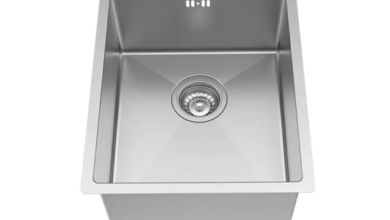Optical Screwdriver by John Bechtel

BUILD THE BASIC SCREWDRIVER
Let’s begin with the easiest possible configuration for the optical screwdriver: a plain-jane Arduino with an LED and three potentiometers. While not particularly wand-like, it gives you an unsexy equivalent that works identically—it makes optical LED flashes that interact with a sensor-equipped synthesizer. The three pots will be used to control the speed, duration, and pauses of the flashing LED.
Build the Test Rig
Unless you have a light-detecting synth handy, you’ll have to build one. This rig emits a beat that is modified by data sent via the light sensor, so it can interact with the screwdriver.
The test rig’s code is a variant of the tonePitchFollower example sketch, which changes a tone based on the level detected by the light sensor. I’ve added a bit more pizzazz by tying the beat length and pause length to the same light sensor, allowing the optical screwdriver to simultaneously modify the beat’s tone, its length, and the time between beats via the light sensor.
BUILD THE WAND VERSION WITH AN ATTINY85
Next I’ll show you how to swap in an ATtiny85, a smaller microcontroller than the ATmega328p featured in the Arduino. This is a simpler chip, without the extra bells and whistles of the Arduino board, but it’s also more compact, which allows you to move the screwdriver circuit off the prototyping board and onto a more portable wand.
Build the ATtiny85 Screwdriver
The next challenge involves turning that loose jumble of wires into something a little more solid. You’ll use a credit card–sized prototyping board from Ad fruit and design it so that, besides a power supply wire, you can hold the entire screwdriver in one hand.
When you’ve made the changes, upload the sketch using the programming rig mentioned earlier in the chapter—that is, by wiring the ATtiny85 to the Arduino and then loading the code to the Arduino. Once the ATtiny85 is programmed, it can be placed in the socket and you’ll be ready to go.
MAKE A PCB WAND
Without the need for a full-sized Arduino, you can make the optical screwdriver much smaller and, well, sexier. In fact, you can make it small enough to fit on a wand-shaped printed circuit board (PCB. The previous version of the screwdriver was for folks who didn’t want to buy or mill their own circuit boards. If you’re up to that challenge, however, this variant of the project is for you.
SUMMARY
Considered by many to be the simplest form of electronics project, a blinking LED nevertheless can offer some cool challenges and opportunities. This project shows how combining digital and analog makes for an intriguing tool that you can make yourself
With its comprehensive coverage and detailed analysis, it offers a valuable resource for trend enthusiasts. By providing accurate and timely information, Trendsactually keeps its audience ahead of the curve. Whether you’re a fashionista, a tech enthusiast, or simply someone who appreciates staying current, Trendsactually has something for everyone.





